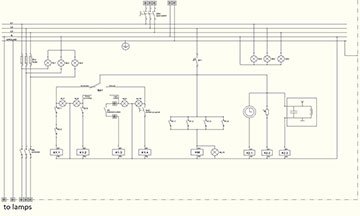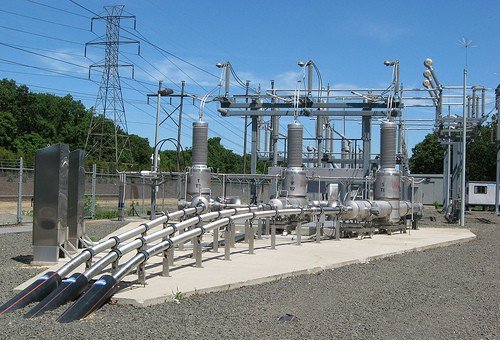Electrical Drawings and Schematics Course
| Date | Format | Duration | Fees | |
|---|---|---|---|---|
| 22 Apr - 24 Apr, 2024 | Live Online | 3 Days | $1750 | Register |
| 25 Jun - 27 Jun, 2024 | Live Online | 3 Days | $1750 | Register |
| 25 Aug - 02 Sep, 2024 | Live Online | 7 Days | $3147 | Register |
| 09 Sep - 13 Sep, 2024 | Live Online | 5 Days | $2250 | Register |
| 02 Oct - 04 Oct, 2024 | Live Online | 3 Days | $1750 | Register |
| 23 Dec - 27 Dec, 2024 | Live Online | 5 Days | $2250 | Register |
| Date | Venue | Duration | Fees | |
|---|---|---|---|---|
| 13 May - 17 May, 2024 | Dubai | 5 Days | $4750 | Register |
| 03 Jun - 07 Jun, 2024 | Dubai | 5 Days | $4750 | Register |
| 23 Jun - 25 Jun, 2024 | Riyadh | 3 Days | $4100 | Register |
| 29 Jul - 02 Aug, 2024 | Dubai | 5 Days | $4750 | Register |
| 11 Aug - 22 Aug, 2024 | Riyadh | 10 Days | $9150 | Register |
| 19 Aug - 23 Aug, 2024 | Dubai | 5 Days | $4750 | Register |
| 02 Sep - 06 Sep, 2024 | Dubai | 5 Days | $4750 | Register |
| 23 Sep - 27 Sep, 2024 | Singapore | 5 Days | $5695 | Register |
| 23 Oct - 25 Oct, 2024 | Dubai | 3 Days | $3950 | Register |
| 11 Nov - 15 Nov, 2024 | Dubai | 5 Days | $4750 | Register |
| 09 Dec - 13 Dec, 2024 | Kuala Lumpur | 5 Days | $5350 | Register |
| 09 Dec - 13 Dec, 2024 | Dubai | 5 Days | $4750 | Register |
Course Overview
In the arena of equipment maintenance, connection or alteration, the capability to read and understand electric drawings is a complete must. This Electrical Drawings and Schematics course covers the creation of detailed electrical drawings, drawing sets and documentation.
It will also discuss protected working practices; methods in inferring technical data and specifications; consuming advanced computer-aided systems and commands, and demonstrate suitable drafting peripheral systems, apparatus and tools to develop detailed drawings. The staff dealing with such equipment and designs should be able to read and understand electrical drawings for equipment maintenance, installation, or modification.
The Electrical Drawings and Schematics course will also provide its participant’s familiarity with electrical equipment design drawing methods, practices, procedures, storing and retrieving data, and producing related documentation for introductory and closing drafts for confirmation. Any electrical drawing comprises of lines, symbols, scopes, and notations to precisely convey engineering design to the employees who install the electrical system.
What is the purpose of this Electrical Drawings and Schematics course? This course is designed to help students to understand the fundamentals of electrical drawings including logic diagrams, wiring layout and CAD. After completing this course, the trainees will possess a professional knowledge of different types of drawings and diagrams and understand their purpose and flow.
This Zoe training course will empower you with the consciousness of knowing the importance of electrical drawings and control circuits, as well as how to go about planning and carrying out competent policies and procedures to maintain high standards in these aspects of engineering.
Course Objectives
Upon completing this Electrical Drawings and Schematics course successfully, participants will be able to:
- Draw detailed electrical drafting surrounding circuit and wiring diagrams/schedules, block diagrams, schematics, panel/board layouts, assembly and installation drawings, modification drawings, and conversion between drawing types
- Identify components and materials from supplier/manufacturers’ catalogues
- Design detailed electrical drawings
- Draw sets professionally
- Draft immaculate documentation
- Produce final drafts for verification
- Achieve a sense of personal gratification in being able to prevent and handle critical issues
- Increased confidence to achieve a competitive advantage over your peers
- Utilise our case study sessions to gain practical knowledge that will give you an edge in your workplace
Training Methodology
This is an interactive Electrical Drawings and Schematics training program and will consist of the following training approaches:
- Lectures
- Seminars & Presentations
- Group Discussions
- Workshops
- Expert Seminars
- Individual Assignments
- Practical Demonstrations
- Group Assignments
- Case Studies & Functional Exercises
Just like all our courses, this program also follows the ‘Do-Review-Learn-Apply’ model.
Organisational Benefits
Companies who send in their employees to participate in this course can benefit in the following ways:
- Trained employees will be better equipped to prevent issues related to design and draw electrical drawings and control circuits
- Obtain experienced and skilled professionals to effectively design and draw electrical drawings and control circuits
- Increase employee satisfaction with the provision for professional development
- Gain a competitive advantage in the industry with more efficient processes
- Optimised operations management leading to reduced maintenance costs
- Reduced costs can mean greater investment opportunities resulting from potentially higher profits
- We can consider tailoring our content to your organisation’s needs
Personal Benefits
Professionals who participate in this course can benefit in the following ways:
- Understand and use computer-aided design systems and commands to draft peripheral systems, equipment and tools
- Learn electrical equipment design drawing methods, techniques, procedures and protocols, and documenting design
- Digitise and scan drafting/drawing products
- Draft data accurately
- Store and retrieve drafting data efficiently
- Produce related documentation for presentations
Who Should Attend?
- Electricians
- Facility Managers
- Non-Electrical Engineers
- Building Engineers
- HVAC Technicians
- Machine Operators
- Apprentices
- Mechanical Engineers
- Alarm Technicians
- Instrumentation Engineers
- Stationary Engineers
- In-house Training Personnel
Course Outline
MODULE 1: ELECTRICAL DRAWINGS
- Drawings – relevance to engineering
- Standards & their necessity
- CAD & drawing standards
- Drawings in plant engineering
- Manufacturing organization
- Typical engineering drawing & its parts
MODULE 2: TWO DIMENSIONAL DRAWINGS
- Different types of drawing
- Electrical layout drawing & types
- Area classification drawing
- Wiring diagram, Drawing scales, block
- Sectional drawing & Block diagram
- Symbology for various types of drawings
- Symbols as per electro-technology standards
- Use of non-standard symbols
MODULE 3: LINE & LOGIC DIAGRAMS
- Power & control circuit diagrams
- Commonly used symbols
- Applications of schematic diagrams
- Single line diagram – advantages & example
- 3-line diagram – applications
- Terms associated with single line diagram
- Purpose of schematic diagram
- Cross-reference between coils and contacts
- Practical exercise
- Logic diagrams & solid-state logic circuits
- Logic gates – AND, OR, NOT, NAND, NOR and Exclusive OR
MODULE 4: CABLING, WIRING LAYOUT AND CABLE SCHEDULE
- Different types of cabling drawings
- Wiring diagrams
- Example of cable routing schedule
- Cable system drawings
- Example for cable layout
- Cable tray installation
- Different types of wiring drawings
- Difference between cabling & wiring drawings
- Cable schedule
- Example of cable schedule
- Example of conduit schedule
- Example of a cable tray schedule
- Example of control cable interconnection
- Conventions used
- Practical exercise – wiring drawing
- Conventions used for layout drawings
MODULE 5: CAD & DRAWING PROCESS FLOW
- Automated bill of material generation
- Layers and their use in sharing information
- Drawing management system
- Symbol attributes
- Planning & assigning of drawings
- Drawing process flow and its steps
- Revision control and ownership of the drawing
- Introduction to CAD
- Capabilities of CAD – editing, accuracy, storage & product design
- Use of symbol & symbol libraries
- Oil & gas application
- Hazardous area zones in layouts
MODULE 6: AC MOTOR DESIGNS
- Interpret data from torque speed curves
- Principles of operation of AC induction motors
- Optimize data based on electrical resistance
- Typical applications for single-phase motors
MODULE 7: AC MOTOR CONTROL
- A comprehensive methodology for investigating design requirements for AC motors
- Pick the right motor
- AC motor specifications and enclosures
- Governance by national and international design standards
- AC motor control components and systems
MODULE 8: DC MOTORS
- DC motor speed measurement
- Principles of DC motors
- Traditional brushed motors
- Electronically driven brushless motors
- Procedure for studying design requirements for DC motors
- Pick the right motor
MODULE 9: DC MOTOR CONTROL AND STEPPER MOTORS
- Hands-on experience with DC motor control
- Actuating a rotary sensor
- Simplified stepper motor drive
- Operation and commercial driver chips and packages
- Comparison of DC vs. AC motors











